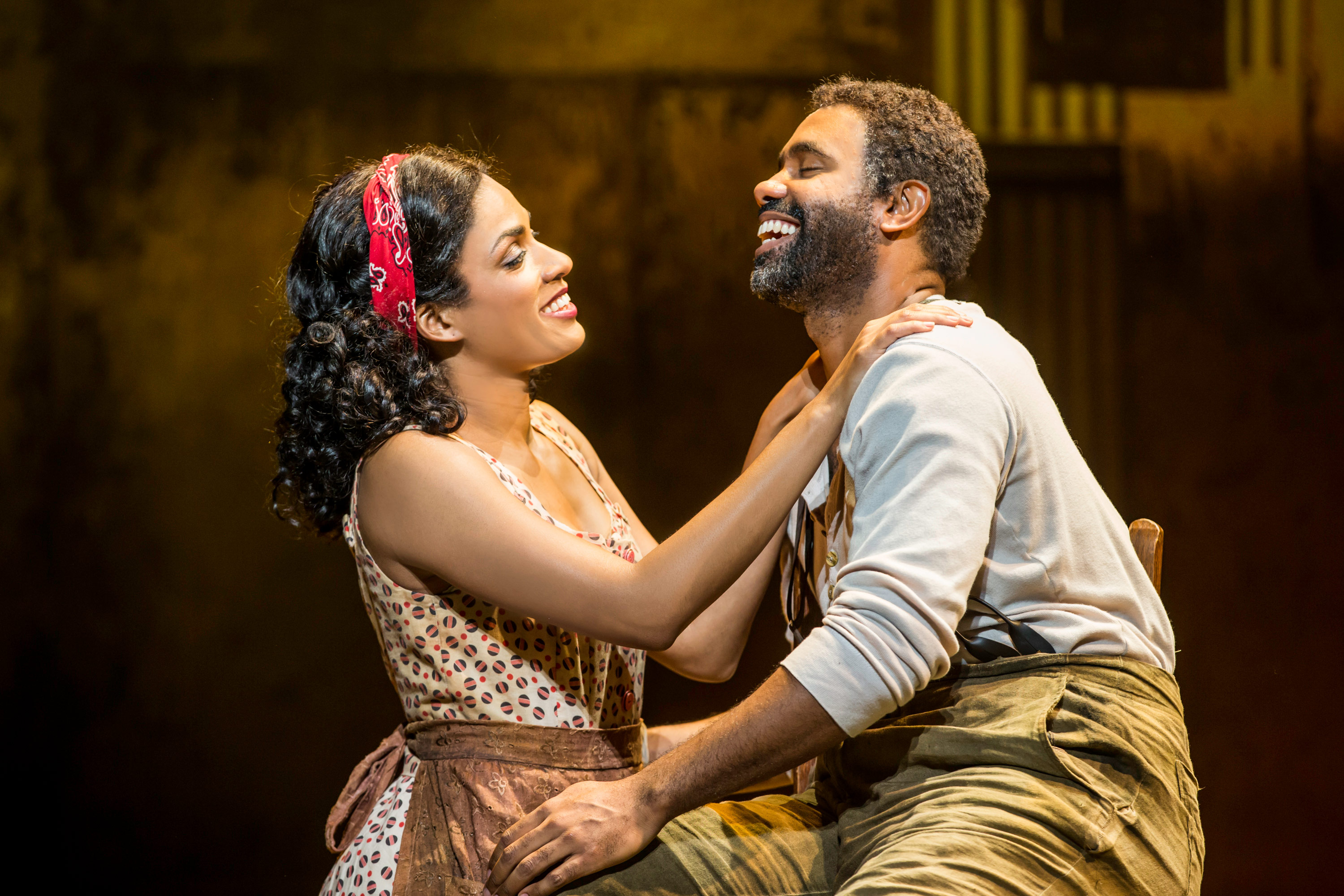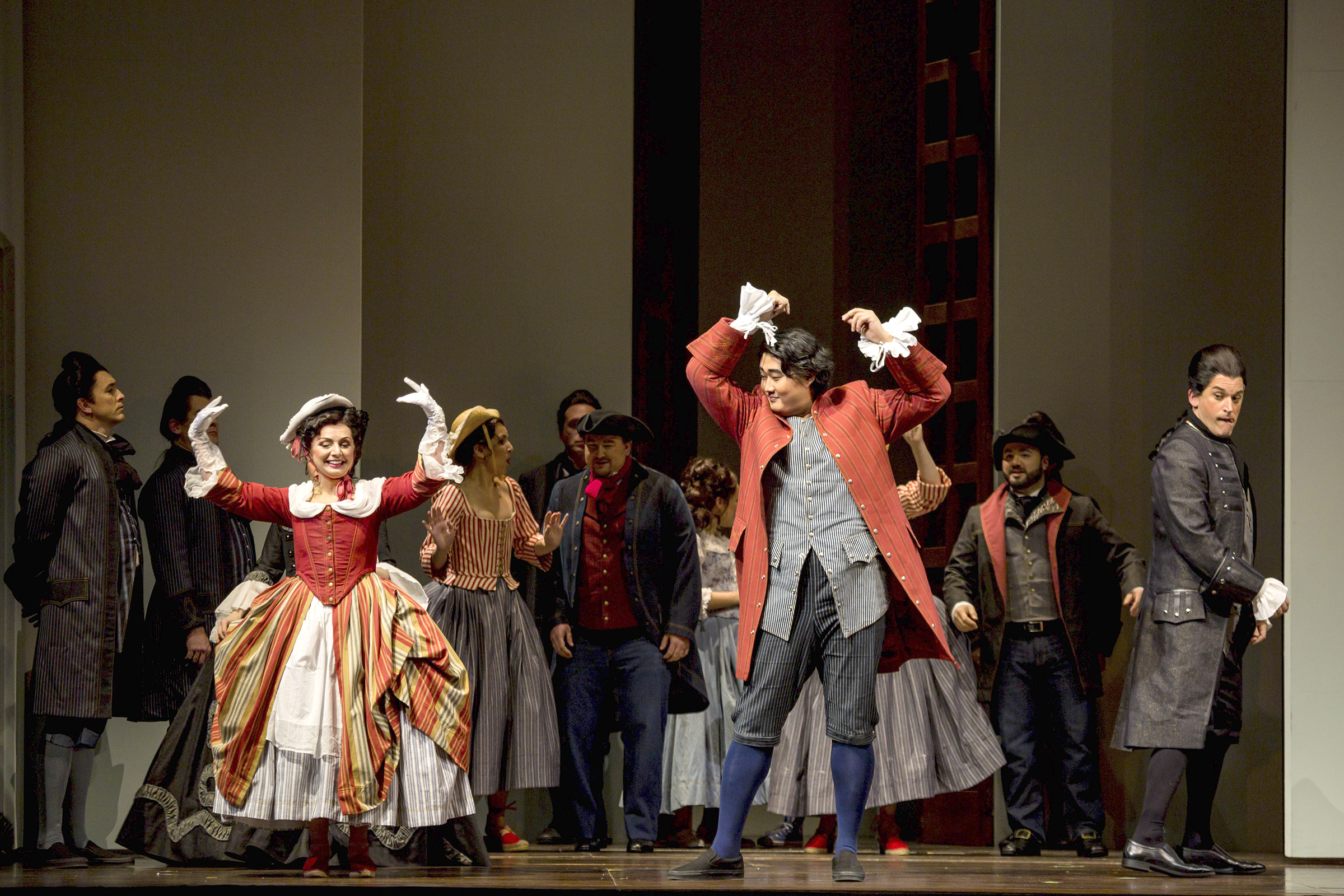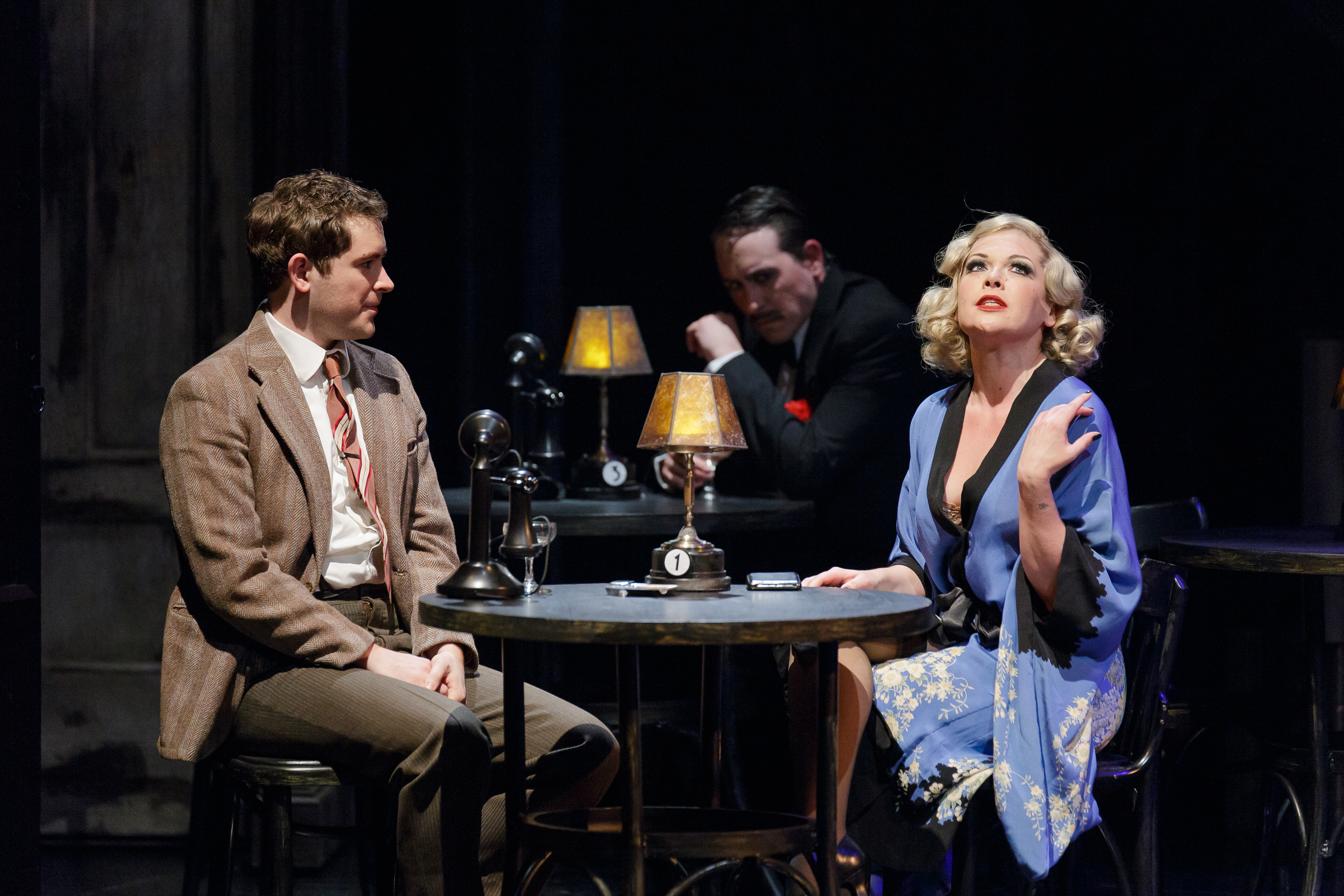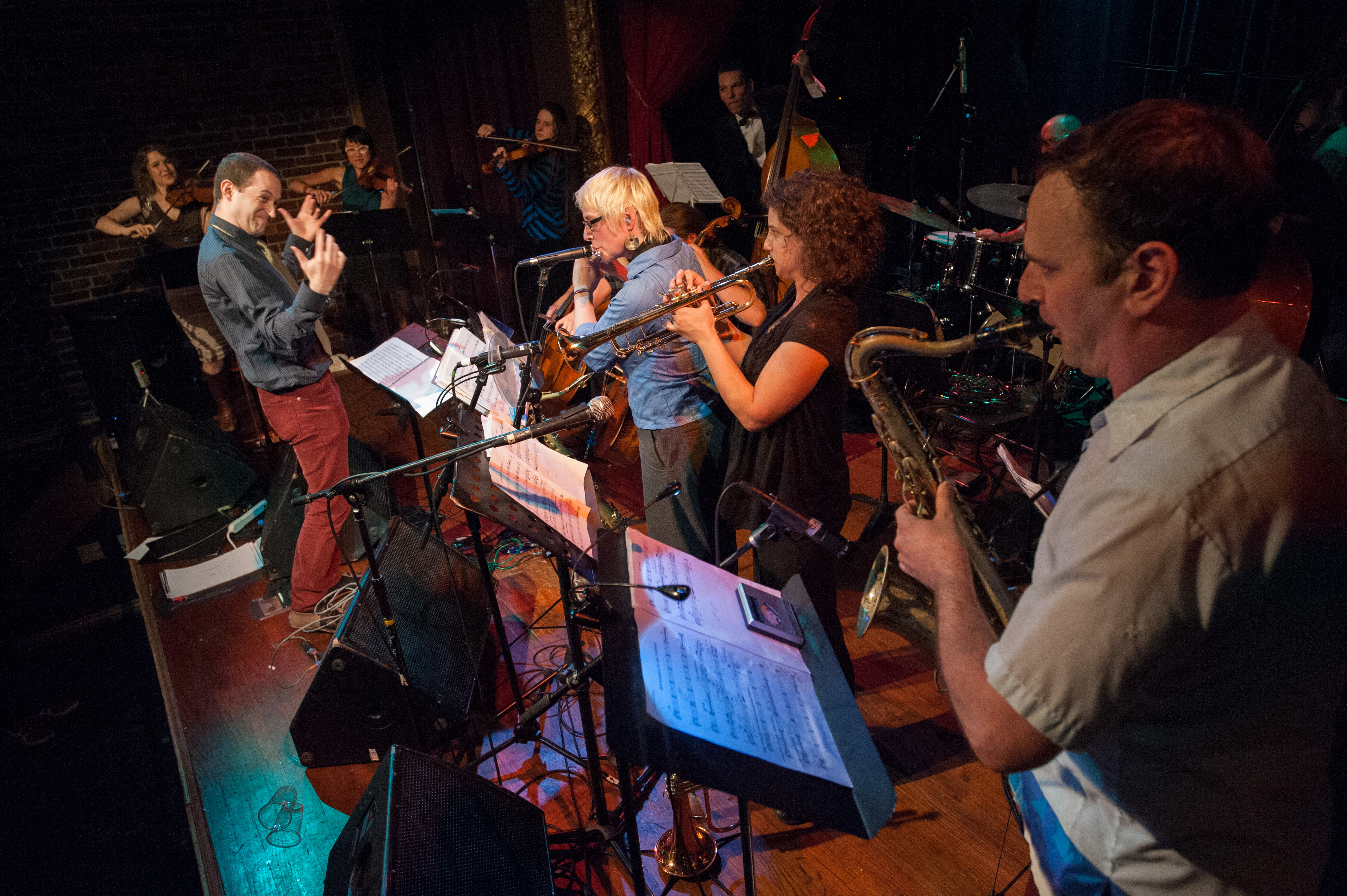Since its 1935 premiere, Porgy and Bess has not only been the center of a tug-of-war over whether it’s an opera—as George Gershwin conceived it—or a musical; more damagingly, it’s been the victim of misconceptions about these genres.
The latest in a long line of pokings and proddings, now on tour at the 5th Avenue, premiered on Broadway in August 2011. The Gershwins’ Porgy and Bess is the brainchild of American Repertory Theater’s Diane Paulus, whose goal, she says, was “to create a more dramatically complete version of Porgy and Bess for a 21st-century audience . . . to fully realize the impulses in the story and the characters” by making it “less operatic and epic and more focused and intimate.” This involved trimming a character or two and a significant amount of Gershwin’s music, replacing much but not all of his recitative (a stylized way of handling speech between musical numbers by setting it to neutral music) with new dialogue by playwright Suzan-Lori Parks.
Parks described her job in similar terms (apparently, P&B needed a lot of work): “Sometimes I’m restructuring a sequence of action, sometimes rewriting an entire scene, sometimes I’m inventing whole new scenes or excavating deeply underwritten original moments, sometimes strengthening the plot line and individual character through-lines, sometimes, you know, ‘fleshing out’ and ‘unpacking’ emotional beats.”
But, judging by this touring production and recalling Seattle Opera’s recent successful staging (coincidentally, also from August 2011), what P&B needs to make it throb and soar is none of this, but instead the breadth, richness, and gravitas of Gershwin’s full score and the original concept. DuBose Heyward, co-lyricist (with Ira Gershwin) and author of the source novel, even drops a hint in the very first song: “Summertime, and the livin’ is easy” can be read as a stage direction, the key to the generous unfolding process that brings the atmosphere and characters to life.
There’s no reason to regard these traits as specifically “operatic,” and thus as flaws that require correction. Shortchange this breadth, and the result is a weird theatrical paradox: The absences get in the way. What’s left is a “musical,” with all that implies of a slick surface on which nothing deeper can take hold. A friend, who knew nothing about this reboot going in, nailed it when he remarked of its streamlined feel, “It just rattles by; there’s no time to absorb any emotion.”
The original P&B’s length, roughly a half-hour more at McCaw Hall than at the 5th (now two and one-half hours with intermission), is not a barrier to appreciation; it’s what allows you to settle into this world and get to know these people. One thing Seattle Opera’s performance brought home is how masterfully Gershwin paced his show, and how deftly and flexibly he was able to deploy recitative alongside the detachable songs that joined the Great American Songbook. It’s a textbook of theatrical construction for any composer.
Converting sung text to spoken also upsets Gershwin’s simple but uncommonly effective notion of having all the blacks onstage sing everything and none of the few whites sing anything. Gershwin biographer Larry Starr describes it as “the ‘negative’ musical space in which the white characters live and act,” and points out this idea’s source in Heyward’s novel: Catfish Row “had been full of many-colored sounds . . . Now, gradually, the noise shrunk . . . All knew what it meant. A white man had entered.”
Starr goes on: “Such a dramatic portrayal of the racial barrier finds expression . . . through [Gershwin’s] denial of any music to the white characters. They speak against a backdrop of silence.” Not in the Parks/Paulus version: Everyone at one time or another speaks against a backdrop of silence, sacrificing Gershwin’s powerful and racially pointed effect.
So be it. All art is fair game to be rethought and reused, and the original remains available. And certainly I’m sympathetic to the economic and logistical constraints of Broadway—especially of touring shows—where the only realistic alternative to a stripped-down P&B (in this case, one set, a smaller cast, and a 22-member orchestra) is no P&B at all.
But what’s profoundly irritating is the notion that the piece had been stranded on Planet Opera and needed to be rescued. In a New York Times preview back in 2011, those involved in the Broadway revival weighed in. Paulus: “In the opera you don’t really get to know many of the characters as people . . . [the] show requires having your heroine be an understandable and fully rounded character.”
Philip Boykin, who played Crown: “Usually the performances and experience of Porgy and Bess are all about voice, sound, worrying about the B flat . . . Now there’s an actual dramatic arc. ”
Audra McDonald, who played Bess: “None of us wanted to do a Porgy and Bess where the audience would sit back comfortably and just, ahhhhhhh, soak in the big gems from the Gershwin score. The music is gorgeous. We all know that. But the opera has the makings of a great love story too that I think we’re bringing to life.”
Bullshit, all of it.
And it’s all salt in a larger wound. Classical music eternally gets accused of insularity, no matter how much effort we put into being otherwise. In return, we get these prejudices thrown back in our face. When the Seattle Symphony plays “Baby Got Back” one weekend and pairs a Strauss waltz with Schoenberg the next, and when Broadway meanwhile is snatching Porgy and Bess out of our elitist hands and indignantly shouting “MINE!” under the pretense of improving it, which they so dishearteningly don’t—well, it rankles. If our domain still seems to have a fence around it, it’s only because all our neighbors have built fences around theirs. (You disagree? Then tell me when hip-hop musicians are going to return the favor and start performing classical works.)
Three summers ago I left McCaw Hall bowled over and convinced anew that P&B was one of the greatest American stage works ever. Saturday night I left the 5th frustrated that people seeing the show for the first time would remain unaware of what it can be.
gborchert@seattleweekly.com
THE 5TH AVENUE THEATRE 1308 Fifth Ave., 625-1900, 5thavenue.org. $39.25 and up. Runs Tues.–Sun. Ends June 29.







